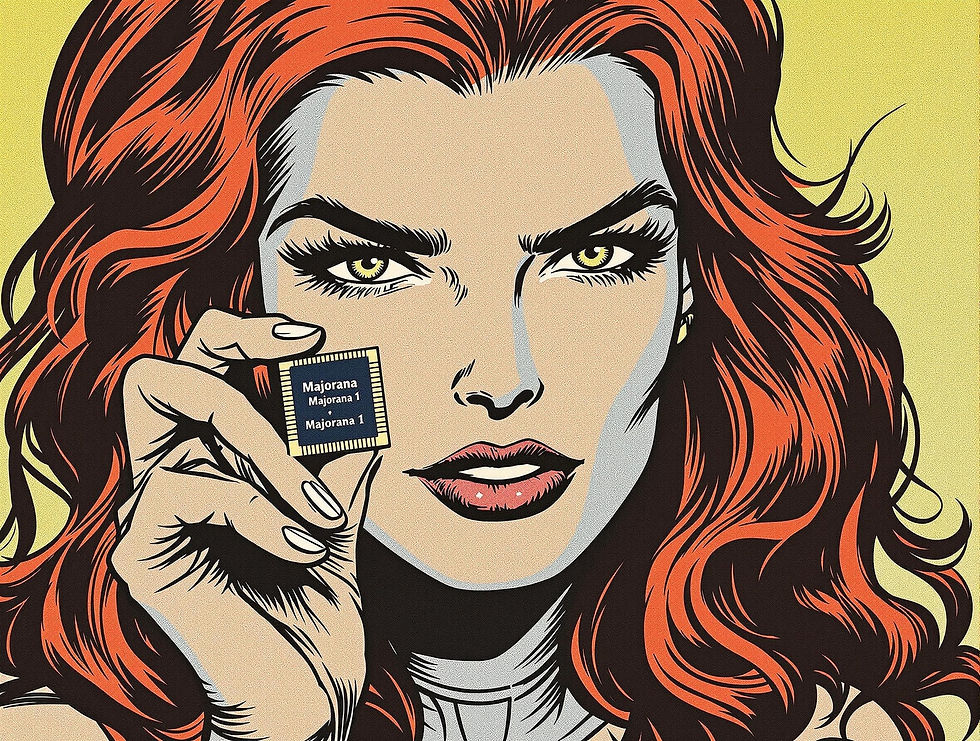Quantum Computing 101: Quantum Error Correction
- Andreea Moga
- Feb 21
- 2 min read

First, a refresher on Superposition
Quantum computers face a challenge: keeping their delicate quantum bits (qubits) from making mistakes. This might sound simple, but it's actually one of the biggest hurdles in making quantum computers useful.
Imagine trying to balance a pencil on its sharp tip. Pretty hard, right? Now imagine balancing a thousand pencils, all at once, for hours. That's similar to what scientists face with quantum computers. Regular computers, which use normal bits (just 1s and 0s), are like pencils lying flat on a table - stable and reliable. But qubits are more like those standing pencils, ready to fall over at the slightest breeze.
Why are quantum computers so fragile? It's because they use something called "superposition," which lets a qubit be in multiple states at once - kind of like how Dr. Strange could be in multiple places at the same time. But just like how a tiny distraction could break Dr. Strange's concentration, the smallest disturbance (like tiny changes in temperature or magnetic fields) can make qubits lose their special quantum properties.
Quantum Error Correction
This is where quantum error correction comes in. Think of it as a safety net for quantum computers. To make one really stable computer, you need thousands of regular qubits working together. It's like needing a whole team of Avengers to do the job of one superhero!
Microsoft's new Majorana 1 chip takes a different approach. Instead of using thousands of qubits to correct errors, they've created special qubits that are naturally more stable - like giving each qubit its own mini-Arc Reactor to keep it stable. Their qubits use special particles that are harder to disturb, like how Vision was powered by the Mind Stone and was harder to take down than regular heroes.
Why does this matter? Because to solve real-world problems, quantum computers need millions of stable qubits working together. With traditional approaches, you'd need billions of physical qubits to get there - like needing every person on Earth to join the Avengers. Microsoft's approach might let us get there with far fewer qubits, making powerful quantum computers more practical.
The race to solve quantum error correction is like the space race of our time. Companies like Google, IBM, and Microsoft are all trying different approaches. Some use more qubits for error correction (like having more backup Avengers), while others, like Microsoft, try to make each qubit naturally stronger (like creating more powerful individual heroes).
For now, quantum error correction remains one of the biggest challenges in quantum computing. But just like how the Avengers kept trying until they found a way to win, scientists are making progress every day. When they finally crack this problem, we'll be able to build quantum computers powerful enough to solve problems we can't even touch with today's technology.
And that's something even Tony Stark would be impressed by.
𝘘𝘶𝘓𝘦𝘢𝘳𝘯𝘓𝘢𝘣𝘴 𝘪𝘴 𝘴𝘶𝘱𝘱𝘰𝘳𝘵𝘦𝘥 𝘣𝘺 𝘵𝘩𝘦 𝘌𝘐𝘛 𝘋𝘦𝘦𝘱 𝘛𝘦𝘤𝘩 𝘛𝘢𝘭𝘦𝘯𝘵 𝘐𝘯𝘪𝘵𝘪𝘢𝘵𝘪𝘷𝘦 𝘰𝘧 𝘵𝘩𝘦 𝘌𝘶𝘳𝘰𝘱𝘦𝘢𝘯 𝘐𝘯𝘴𝘵𝘪𝘵𝘶𝘵𝘦 𝘰𝘧 𝘐𝘯𝘯𝘰𝘷𝘢𝘵𝘪𝘰𝘯 𝘢𝘯𝘥 𝘛𝘦𝘤𝘩𝘯𝘰𝘭𝘰𝘨𝘺 (𝘌𝘐𝘛)




Comments